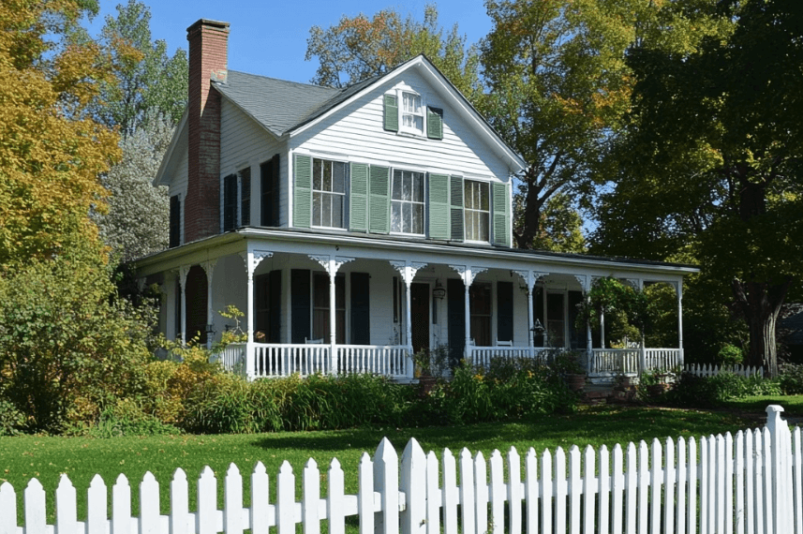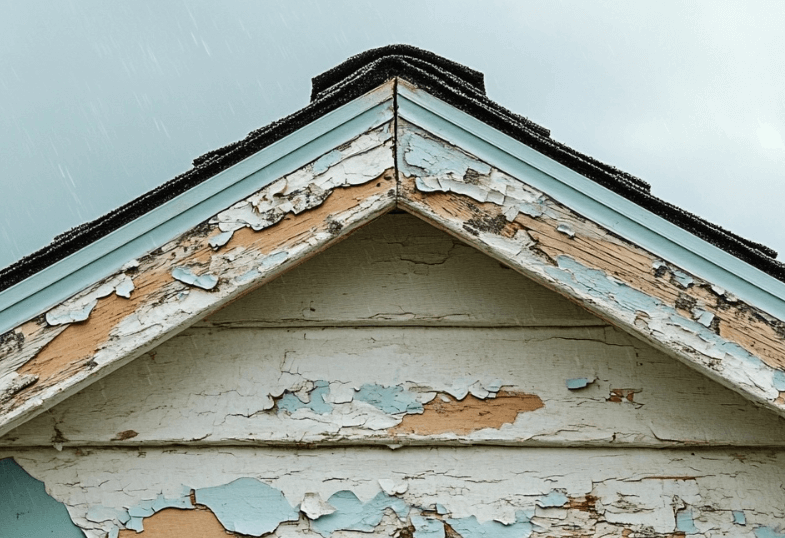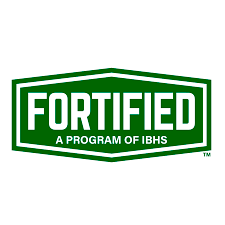
Fascia is the horizontal board that runs along the edge of your roof, covering the ends of the rafters. It’s the finishing touch that connects your roof to the outer walls of your home, providing a clean, smooth appearance while also supporting the lower edge of the bottom row of tiles or shingles.
Beyond aesthetics, fascia serves as a critical barrier between the outside elements and your home’s interior. It helps prevent water from seeping into the roof structure, which could lead to rot, mold, and structural damage. Additionally, fascia provides a mounting point for gutters, which is essential for directing water away from your home’s foundation.
Types of Fascia Materials
Wood Fascia
Wood fascia is a traditional material, valued for its natural appearance and versatility. It can be painted or stained to match any exterior, making it a popular choice for homeowners looking to maintain a classic look. However, wood requires regular maintenance to protect against rot and insect damage.
Vinyl Fascia
Vinyl fascia offers a low-maintenance alternative to wood. It’s resistant to rot, insects, and moisture, making it a durable option for various climates. Vinyl is also more affordable, but it can be prone to cracking in extreme temperatures.
Aluminum Fascia
Aluminum fascia is known for its lightweight nature and resistance to rust. It’s often used in combination with other materials like vinyl or wood to provide additional durability. While more expensive upfront, aluminum fascia can last for decades with minimal maintenance.
Fiber Cement Fascia
Fiber cement fascia is a blend of wood fibers, sand, and cement, offering exceptional durability and resistance to weather conditions. It’s heavier and more challenging to install than other materials, but its strength and longevity make it an excellent investment for homes in harsh environments.
PVC Fascia
PVC fascia is another low-maintenance option that’s gaining popularity. It’s resistant to moisture, insects, and UV rays, making it a versatile choice for different climates. PVC fascia is easy to install and available in various colors and styles, allowing homeowners to customize their home’s exterior.
Choosing the Right Fascia for Your Home
When choosing fascia, consider factors like climate, budget, and the overall aesthetic of your home. For example, wood may complement a traditional-style home but requires more upkeep in humid environments. Vinyl and PVC offer low-maintenance solutions, while aluminum and fiber cement provide superior durability in extreme weather conditions. It’s crucial to weigh these factors to select fascia that not only enhances your home’s appearance but also stands up to local environmental challenges.
Fascia isn’t just about function—it can also add a touch of style to your home’s exterior. Traditional fascia boards provide a clean, straightforward look that suits most architectural styles. Coved fascia, with its slightly rounded profile, offers a softer, more refined appearance. Decorative fascia trim, on the other hand, adds visual interest with intricate patterns or layered designs, making it a perfect choice for homeowners looking to add character to their home.
Fascia vs. Trim
Though fascia and trim are often mentioned together, they serve distinct purposes. Fascia is primarily structural, providing a surface for gutters and a barrier against the elements at the edge of the roof. Trim, however, is used to enhance the aesthetic appeal of your home by covering joints, framing windows and doors, and adding decorative touches. While both fascia and trim contribute to the overall look of your home, fascia plays a more critical role in its protection and longevity.
Common Signs of Fascia Damage

One of the most common signs of fascia damage is water stains or rot. When gutters overflow or rainwater isn’t properly channeled, it can seep into the fascia, causing it to weaken and eventually decay. This can lead to more significant issues, like leaks in your roof or damage to the interior of your home.
Damaged or rotting fascia can become a gateway for pests like insects, birds, or rodents. These unwelcome guests can further compromise the integrity of the fascia and even invade your home. Regularly inspecting and maintaining fascia can help prevent these infestations.
Over time, untreated fascia damage can compromise the structural integrity of your home. As the fascia deteriorates, it may no longer be able to support gutters or protect the roofline, leading to costly repairs. Early detection and timely repairs are essential to avoid these more severe problems.
The Risks of Ignoring Damaged Fascia
Neglecting fascia damage can have serious consequences. When fascia is compromised, it leaves your home vulnerable to water intrusion, leading to mold growth, wood rot, and even foundational issues if water isn’t properly directed away from the structure. Moreover, damaged fascia can weaken the attachment points for gutters, increasing the risk of gutter failure during heavy rain or snow. The longer these issues go unaddressed, the more extensive and costly the repairs will become. Proactive maintenance is key to protecting your investment and ensuring your home remains secure and dry.
Maintaining and Replacing Your Fascia
Regular maintenance is crucial to extend the life of your fascia. Start by cleaning your gutters regularly to ensure that water is properly directed away from your home. Clogged gutters can lead to water overflow, which might seep into the fascia and cause damage.
Additionally, make it a habit to inspect the fascia boards for any signs of trouble, such as:
- Rot
- Cracks
- Warping
Addressing these issues promptly can prevent more extensive damage. For wood fascia, applying a fresh coat of paint or sealant is essential to protect it from moisture and UV damage. For other materials, such as vinyl or aluminum, cleaning with a mild detergent will keep them looking and performing well.
Knowing when to repair or replace your fascia can save you from larger problems down the road. Minor issues like small cracks or peeling paint can often be repaired with a little DIY effort. However, if you notice significant rot, extensive pest damage, or if the fascia is pulling away from the roofline, it’s time for a replacement. In some cases, it may be more cost-effective to replace the entire fascia rather than repeatedly patching it up. A professional inspection can provide clarity on the best course of action.
The cost of fascia replacement varies depending on the material, labor, and the size of your home. Wood fascia is generally the least expensive option, but its ongoing maintenance can add up over time. Vinyl and aluminum are mid-range in cost and offer better long-term value with less upkeep. Fiber cement and decorative fascia trims are on the higher end, but they provide superior durability and a unique aesthetic. When budgeting for fascia replacement, it’s essential to factor in not just the upfront costs but also the long-term benefits and maintenance requirements of your chosen material.
When to Address Soffit and Fascia Together
Fascia and soffit often work hand in hand to protect your roof and home from the elements. If you’re replacing or repairing fascia, it’s a good time to inspect the soffit as well. Soffits, the boards tucked under the eaves, help with ventilation and prevent moisture buildup in your attic. Damage to the fascia often coincides with issues in the soffit, so addressing them together can save time and ensure your entire roofline is secure. If your soffit shows signs of rot, warping, or pest infestation, it’s wise to tackle both areas simultaneously to maintain the integrity of your home’s exterior.
Keeping Your Home Protected with Quality Fascia
Being acquainted with the the signs of damage, and knowing when to repair or replace, you can ensure your home stays protected for years to come. Regular maintenance and timely intervention are your best defenses against the costly consequences of damaged fascia. Whether you’re building a new home or maintaining an existing one, choosing the right fascia and taking care of it will keep your home looking great and performing well for the long haul.





